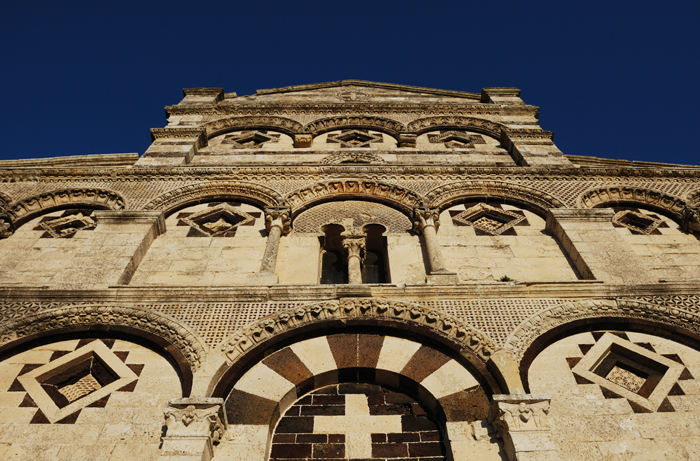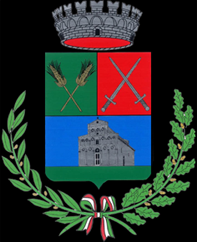
On a hill in the countryside of Borutta is the Church of San Pietro
di Sorres. At his side, back, are the Benedictine monastery; both are
distinguished by the same masonry bicroma of rows of white limestone
and dark lava rock. The contrast between the agricultural landscape,
utterly devoid of houses, and the greatness of the Church makes it look
more imposing facade and its 11 metres high. In antiquity the reliefs
and peaks were felt as safe or at least defensible locations, for this
were often home to settlements.
Archaeological findings have proved that the land on which stands the
complex of San Pietro di Sorres was inhabited since Neolithic times.
The settlement on the Hill is testified by the remains of a nuraghe that
was where in the middle ages the prospectus was built East of the Church
with the great apse and three mullioned Windows (Windows with a single
opening) that offer plenty of light at dawn the presbytery.
The ages ranging from the 8th to the 10th to Sardinia a moment of silence
of the sources. The lack of news is particularly severe for Sorres why,
then, was born the village. Were probably the needs of worship of that
young country inhabited by shepherds and farmers who led to the costruziione
of the Church. The lack of a local building tradition able to pleasure
a big church and then cover it with stone once led to the maestranza
search capable. These were from overseas as well as evidenced by the
Pisan Romanesque style. In 12th century documents concerning Sorres and
his Church refer to as this is now the seat of the Bishop. The building
was constructed in two stages, one in the second half of the 11th century,
the other from the second half of XII. The dimensions are considerable:
33 meters long and 13 meters wide. Inside he finds himself outfitted
with large pillars and large arches that divide the House into three
naves. The control unit is larger than the laterals; all are covered
with cross vaults. Among the things to note in a visit to the Church
include a large screen, which is a stone slab decorated with two large
inlaid wheels dating from the late 12th century, positioned along the
right aisle; the inscription, which often threatens to pass unnoticed,
located below the large entrance portal in the façade, where it
reads the name of Mariane maistro (master Mariano), probably the one
who directed the construction of the Church. The presence of a signature
is a rare and important because it provides a paper on building and testifies
to the consciousness that the artist had himself and his work.
Cathedral of San Pietro di Sorres-pictures |
|



